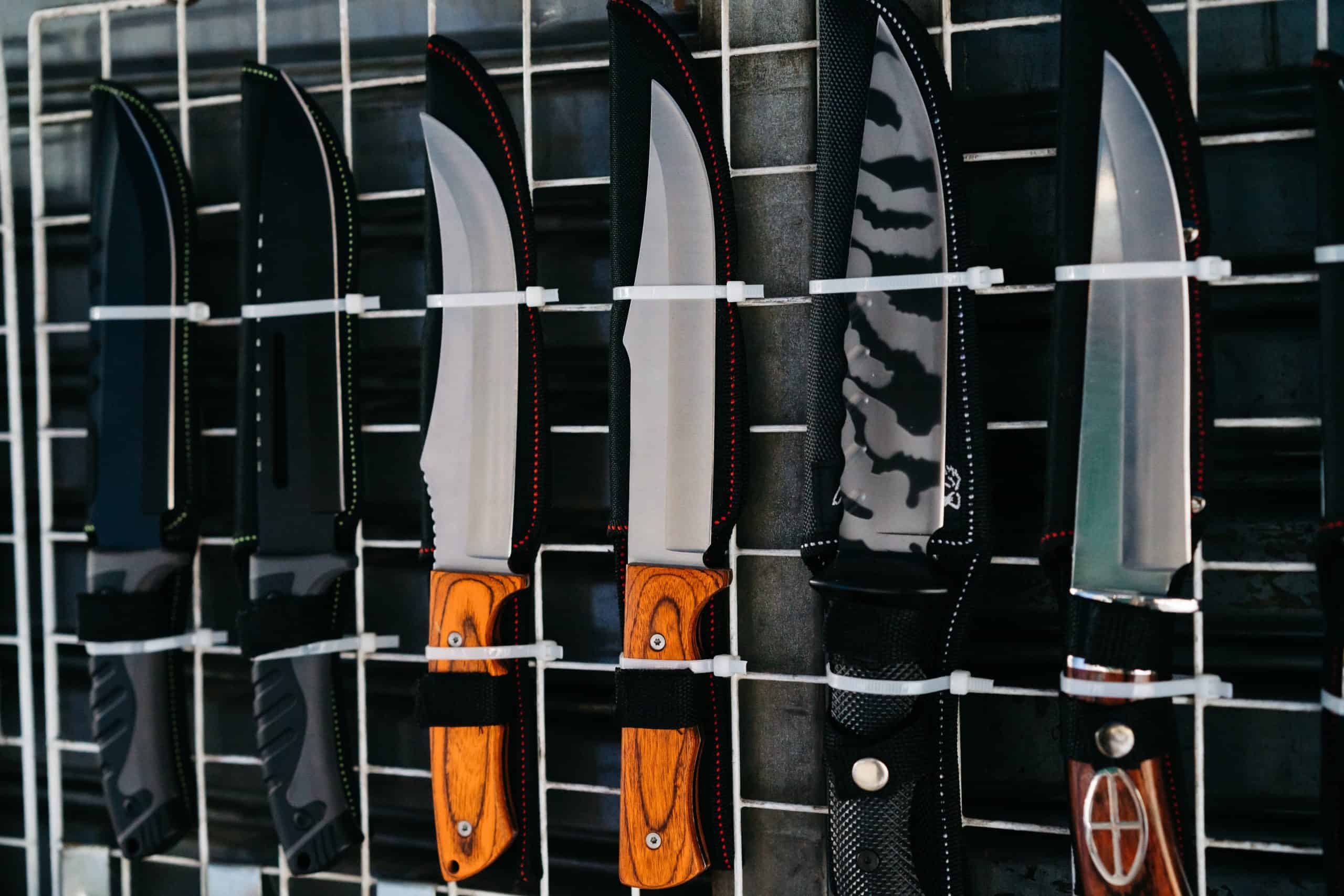
Introduction
When replacing knife handles, there are certain factors worth considering. The most important among them include the type of material and shape of the handle as well as how comfortable it is to hold and use. In addition, you should consider the task at hand when selecting a replacement handle; some surfaces are best suited for particular materials and shapes, while others require something else altogether. Another thing to consider is durability; some materials and styles offer both long-lasting performance and comfort even after prolonged use in tough or wet environments. Finally, any handle should have a secure grip that can be easily adjusted for personal preferences. Ultimately, you should shop with all these needs in mind to find the best replacement handles for your knives.
Types of Knife Handles
Replacement knife handles come in a wide variety of shapes, styles, and materials. For starters, there are a handful of different handle shapes to choose from. Round handles, which are circular in shape, are generally easier to grip while allowing your fingers more freedom of movement when gripping and thrusting the knife forward. Oval handles are similar to round handles but will often have more contouring and texture for person-specific preferences and needs. Handles that conform to the natural shape of the hand (such as those with a swell near the pouch) offer improved stability while allowing your thumb full control over where it should rest on the handle.
In terms of material, there is no one-size-fits-all solution. Commonly used materials for replacement knife handles include metal, hardwoods such as walnut or maple, micarta, leather or G10 synthetic polymer-based composites. Each material comes with its own benefits and price point. Metal provides superior durability but may be too slippery; leather offers good grip at lower cost; hardwood provides an elegant finish; whereas micarta/G10 provide an excellent combination of durability and basic ergonomics at reasonable pricing points. In some cases you may even opt for a wrapped handle for improved feel without having to make significant changes in material type or design features.
Benefits of Replacing Your Knife Handle
Replacing your knife handle can provide a variety of benefits. One of the main benefits is increased comfort when using a knife, as an ergonomic handle will be able to fit more comfortably in your hand. Additionally, after some use and wear and tear, handles can start to become slippery or difficult to grip, which can reduce the overall performance of the knife. Replacing the handle with a new one allows you to improve the stability of your grip for better control over the blade.
Another great benefit of replacing your knife handle is increased durability. An ergonomically designed handle helps prolong the lifespan of your cutlery by providing strong durability and shock absorption. The type and quality of materials used for handles also affect their durability – choosing materials such as aluminum or titanium allows you to enjoy greater longevity from your knives, as these materials are hard wearing and resistant to corrosion.
Pros and Cons of Different Handle Materials
Pros
Wood: Wood handles are a classic choice. They can give your knife a warm, traditional look and provide excellent grip due to the grain in the material. They have good insulating properties so they won’t transfer heat or cold too quickly.
G10: G10 or fiberglass-reinforced plastic is increasing in popularity due to its durability and strength. It can be molded into any shape and texture which makes it excellent for creating custom-shaped handles that comfortably fit your hand. It’s also resistant to water, oil, chemicals, and temperatures up to 150°C.
Micarta: Micarta is created by compressing linen and resin under high pressure forming a composite material with great aesthetic value as well as excellent grip even when wet from rain or sweat. It offers superior shock absorbency compared with other materials making it comfortable for long periods of use.
Stainless Steel: Stainless steel handles offer great corrosion resistance even in saltwater environments and good grip in wet conditions due to its texture. Unfortunately, metal is heavy compared with other materials and often uncomfortably cold in freezing temperatures, but if you want your knife to stand up to extreme environments, metal may be your best option
Cons
Wood: Although durable when properly treated, wood still has limitations on its lifespan; if exposed to constant moisture or humidity it could warp, rot or crack over time making it an unsuitable choice for outdoor use or areas subject to changes in weather conditions. It also requires regular maintenance to keep the finish looking new.
G10: G10 can be slick at times making it prone to slipping out of your hands during use if not handled carefully; considering this inadequate grip strength could cause accidents which make G10 inappropriate for applications where secure handling is critical such as hunting or survival tasks.
Micarta: Micarta doesn’t offer much waterproof protection as water can penetrate through microscopic seams however it doesn’t absorb moisture so much as other materials making maintenance easy should moisture penetrate inside the handle.
Stainless Steel: Stainless steel is one of the most difficult materials to clean due to its smooth surface which resists abrasive agents that would otherwise help rid dirt from the surface; stainless steel requires enhanced cleaning agents such as citric acid these products may damage some hardwood type handle finishes if not used appropriately making maintenance more difficult than other materials
Tips for Choosing the Right Knife Handle for You
There are many factors to consider when selecting the right replacement handle for your knife. Firstly, you should think about what type of knife handle you would like. You can choose from different materials such as wood, rubber, or plastic. These different materials offer varying levels of grip, comfort and durability. Additionally it is important to look at the shape of the handle and how it fits in your hand. It is important to find a handle that is comfortable for you to use for long periods of time and one that offers a secure grip even when wet.
Once you have decided which material and shape of handle works best for you, consider the finish. Some handles may be a smooth finish or feature engravings or patterns giving them a unique look and feel. If your knife is exposed to extreme temperatures or chemical exposure make sure that your handle can withstand them without damage. Furthermore if possible try out some handles yourself before making a purchase as this may give you an insight into their quality and longevity in real life application rather than relying on photographs or reviews on websites. Finally, check if spare parts are available such as screws or scales as these can be changed if necessary as part of regular maintenance and cleaning processes.
Replacing Your Knife Handle
Replacing a knife handle can be a great way to update the look and feel of your favorite knife, or to repair a worn-out handle. Replacing the handle isn’t as difficult as you might think, so long as you have the right tools and materials. Below is an illustrated guide which outlines the steps necessary to replace your knife handle in eight easy steps.
1. Gather Materials: Assemble all of the materials you will need for the project including new handles, epoxy, sandpaper and clamps.
2. Remove Old Handle: Carefully unscrew or pry off the old handles from your knife using a screwdriver, chisel or other appropriate tool. Make sure that all parts are removed from the blade and set aside in case you want to collect them for later use or sentimental value.
3. Clean Knife Blade: Once all components are removed from the blade, clean away any dirt/debris with a toothbrush and mild soap solution, then rinse with warm water to ensure a clean surface for attaching new handle components later on.
4. Prepare New Handles: Using sandpaper (or other abrasive material), gently work off any sharp edges from the new handles and make sure they fit snugly onto the knife’s tang—a short rod protruding from its blade designed specifically for attaching handles—before moving onto step five.
5. Secure Handles: Apply epoxy liberally along both sides of each handle, then press them firmly against their respective tangs until positioned correctly; secure with clamps around each one until dry (or follow specific manufacturer instructions if included).
6. Let Dry: Allow 24-48 hours for epoxy to fully cure before proceeding to next steps; this part can be done over longer intervals if necessary but it is essential that you do not attempt to proceed without allowing sufficient time for drying agent first!
7. Fine Tuning & Final Touches: Sand down both handles lightly with sandpaper until edges become smooth and uniform; add some oil on both surfaces before polishing them for ultimate shine (follow specific cleaning recommendations if applicable).
8 Enjoy Your New Handle: And there you have it! A freshly customized blade with brand new ergonomic handles that not only look great but also feel comfortable in your hand! Whether it was replacing an existing piece or improvising something entirely new – enjoy your newfound confidence when wielding this trusty tool!
Final Thoughts
When replacing your knife handle, there are a few important considerations that you should keep in mind. Firstly, safety always comes first – the new handle must fit the blade securely, and be secured firmly to ensure it won’t come loose from the blade. Secondly, consider durability when selecting a handle material; many materials like wood are beautiful but may not be as robust as synthetic options. Additionally, make sure that the shape of your new handle fits comfortably and securely in your hand for maximum control of your work. Lastly, choose a material that allows you to maintain it easily; some materials require oiling or sanding periodically to maintain their appearance and performance.















